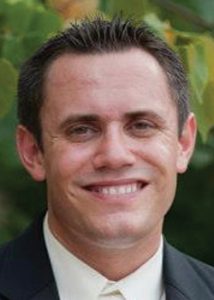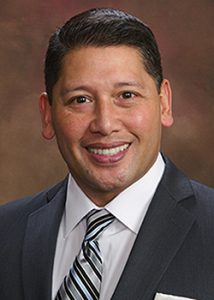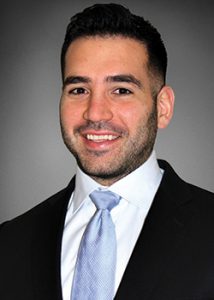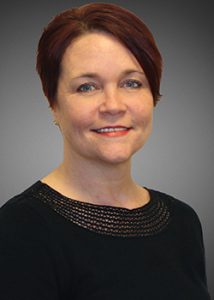SOCIAL SERVICE AGENCIES
Coverage is limited as their roles expand
By Joseph S. Harrington, CPCU
Their missions are expanding while their access to insurance is contracting. That’s the situation faced by social service agencies and other nonprofit organizations as they strive to serve populations disrupted by the pandemic and its economic aftermath.

“Social services are experiencing a shakeup in the insurance marketplace, with some standard markets lowering limits, restricting coverage or issuing non-renewals,” says Anthony Vellutato, second vice president and sales director for Gateway Specialty Insurance. “Coverage for abuse and molestation, professional liability, and excess liability is eagerly sought after due to exclusions or reduced limits.
“Meanwhile,” he adds, “social services have been faced with changes in funding and operations due to the pandemic and inflation.”
“Capacity for sexual abuse and molestation coverage has been decreasing over the past few years,” says Michelle Irwin, executive director of underwriting for the Irwin Siegel Agency. To pick up some of the slack, she sees excess and surplus lines coming into the market for liability coverage for social service agencies and nonprofit organizations.
“All carriers in this space are looking for creative ways to profitably provide coverage these agencies need,” she says. “Carriers are focused on risk management—the policies and procedures an insured has in place to prevent claims, particularly claims of abuse and professional liability.
“Complex risks with claims issues are finding they have to bear more of that risk through self-insured retentions.”
Restrictions and rates
Robin Stolle, area vice president with RPS Signature Programs, sees carriers using coverage restrictions, tighter limits, and increased rates to maintain profitability in the social service/nonprofit sector.
“Underwriters are tightening their risk appetite, and for the accounts they do want to write, we are seeing rate increases,” she says. “We are also seeing fewer carriers willing to write excess limits. Any limit over $5 million is almost impossible to get.”
Social services and nonprofits that operate vehicles are experiencing “an acute coverage crunch” in auto insurance, according to Vince Terlaje, executive vice president of MiniCo Insurance Agency. He says that carriers in the distressed commercial auto market are tightening underwriting guidelines and no longer quoting coverage for accounts with certain exposures.
“We have heard from a number of brokers that there are no markets that will consider certain risks and now have to scramble for auto coverage, some asking us to reconsider accounts we have declined,” he says.
Prior acts
No matter how well an organization implements loss control today, that won’t address acts done in the past. On that score, the liability exposure of agencies and organizations that care for individuals has been expanded by laws extending statutes of limitations for making abuse claims.
“We have seen cases come to light from alleged abuse in the 1980s,” says Stolle. “It’s prompting some carriers to rethink how far back they want to offer prior acts coverage on claims-made accounts.”
Liability after the fact is expanding in scope as well as time, according to Irwin. “This is no longer just about child abuse,” she says. “I suspect other states will adopt legislation similar to New York’s Adult Survivors Act.

“If that happens, the entire social service industry could be subject to these types of claims, not just youth-serving organizations,” she says. “Therefore, it is extremely important to understand the statutes of limitations for the populations you are insuring in the states where you operate.”
In response, Vellutato finds that carriers insuring social services are reducing their limits and reviewing their pricing for prior acts coverage.
COVID’s impact

Another limitation on coverage is of more recent vintage: the near-universal addition of communicable disease exclusions to liability policies in the wake of the COVID-19 pandemic.
“[M]ore and more social service agencies team up with first
responders … [which] creates new exposures for
workers comp, auto liability, and professional liability.”
—Vince Terlaje
Executive Vice President
MiniCo Insurance Agency
“Markets have applied communicable disease exclusions and/or declined to write any type of habitational type risk,” says Stolle. “Also, daycare providers, whether for adults or minors, have been negatively impacted due to the risk of infection. Any account with a number of people in a small setting will experience a negative impact.”
After having “paused” coverage for residential risks such as group homes, shelters, and rehab facilities during the height of the pandemic, Terlaje finds that “some carriers are still not back in the game of taking on residential-type risks.”
The pandemic has tested the ability of agencies and nonprofits to adapt their operations to reduce risk while continuing to pursue their mission.
“Pandemic conditions have certainly helped organizations become more agile in providing services,” says Zack Siegel, director of business development for Irwin Siegel Agency. “For example, programming that can be provided remotely will be utilized during inclement weather rather than putting people in vehicles in bad conditions.
“However, as with most risk management strategies, one solution can create another exposure,” he adds. “With remote programming comes an in-creased cyber exposure at a time when the cyber insurance market is extremely firm.”
Property woes
Property loss exposures don’t often loom large for social services and non-profits, but the recent toll of natural catastrophes spares no one.

“We’re seeing increased property coverage restrictions in cat-prone territories,” says Patti Bonnell, assist-ant vice president of underwriting for Irwin Siegel Agency. “Carriers are adding separate windstorm-hail deductibles to compensate for increased risk in areas with extensive wind and hail exposure. Also, supply chain issues coupled with a stagnant labor market compound property claims.”
“We have seen cases come to light from alleged abuse in the I980s. It’s prompting some carriers
to rethink how far back they want to offer prior acts coverage on claims-made accounts.”
—Robin Stolle
Area Vice President
RPS Signature Programs
Natural disasters are less and less restricted to certain geographic areas, Bonnell adds. “For example,” she says, “when thinking about property risks in New York City, hurricanes are not typically the first exposure to come to mind. However, after recent damage from Hurricane Ida, this needs to be re-evaluated. The same goes for wildfires, convective storms, and other perils. The chance for significant weather events can no longer be discounted based on geography.”

When it comes to exposure to wildfire, hail, and tornado loss, “the maps are changing,” says Terlaje.
“Fire and wind-driven rain are the biggest property exposures facing social services,” says Vellutato. “Coastal states have been hit with wind and rain over the past five to 10 years and California wildfires have really run wild.”
While the hazards have increased, so too have the operations at risk, according to Vellutato. “What once was a simple food bank operation now offers a homeless shelter, charity, and advocacy,” he says.
Heading outl
Despite the growing concern to protect property, an increasing share of the overall risk that social service agencies and nonprofit organizations face is away from fixed locations they own.
“We are also seeing more home healthcare risks than we have in the past,” says Stolle. “People are more inclined to keep their loved one at home and hire help to care for them than to put them in a facility. We are also seeing an increase in foster placement agency accounts.”

Perhaps the greatest recent innovation in social service—one that entails great risk—is the practice of having social service professionals accompany police, fire fighters, and paramedics in responding to emergencies.
“When thinking about property risks in New York City, hurricanes are
not typically the first exposure to come to mind. …
The chance for significant weather events can
no longer be discounted based on geography.”
—Patti Bonnell
Assistant Vice President, Underwriting
Irwin Siegel Agency
“There’s an opportunity as more and more social service agencies team up with first responders,” says Terlaje. “For example, with mental health counselors going to the scene of domestic disputes creates new exposures for workers comp, auto liability, and professional liability.
“Taking the work out of the clinic and putting it in the field under fire certainly impacts one’s judgment.”
For more information:
Gateway Specialty Insurance
www.gatewayspecialty.com
Irwin Siegel Agency
www.siegelagency.com
MiniCo Insurance Agency
www.minico.com
RPS Signature Programs
www.rpsins.com
The author
Joseph S. Harrington, CPCU, is an independent business writer specializing in property and casualty insurance coverages and operations. For 21 years, Joe was the communications director for the American Association of Insurance Services (AAIS), a P-C advisory organization. Prior to that, Joe worked in journalism and as a reporter and editor in financial services.





